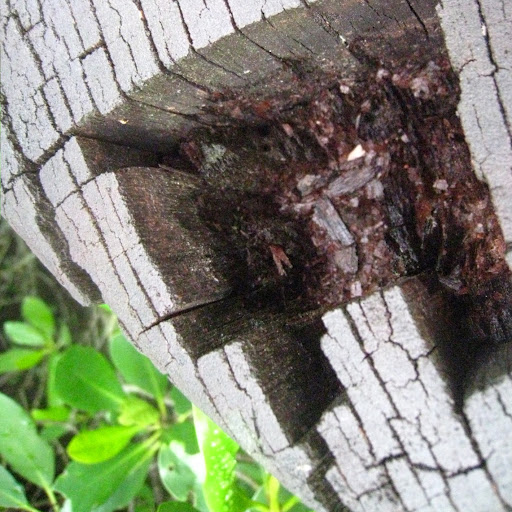Yu Chun Cheng
age ~48
from Sunnyvale, CA
- Also known as:
-
- Yu C Cheng
- Yu U Cheng
- Chun Cheng Yu
- Yuchun Cheng
- Chun Y Cheng
- Yuchung Cheng
- Chung Cheng Yu
- Yu Ccheng
- Phone and address:
- 861 Shirley Ave, Sunnyvale, CA 94086
Yu Cheng Phones & Addresses
- 861 Shirley Ave, Sunnyvale, CA 94086
- Folsom, CA
- San Jose, CA
- Fremont, CA
- Milpitas, CA
- Union City, CA
- Oakland, CA
Medicine Doctors

Yu D. Cheng
view sourceSpecialties:
Neurology
Work:
Sharp Community Medical GroupEr Kai Gao MD Inc
8851 Ctr Dr STE 603, La Mesa, CA 91942
6196674545 (phone), 6196674550 (fax)
8851 Ctr Dr STE 603, La Mesa, CA 91942
6196674545 (phone), 6196674550 (fax)
Education:
Medical School
Jinan Univ, Med Coll, Guangzhou City, Guangdong, China
Graduated: 1986
Jinan Univ, Med Coll, Guangzhou City, Guangdong, China
Graduated: 1986
Procedures:
Lumbar Puncture
Sleep and EEG Testing
Neurological Testing
Psychological and Neuropsychological Tests
Sleep and EEG Testing
Neurological Testing
Psychological and Neuropsychological Tests
Conditions:
Alzheimer's Disease
Bell's Palsy
Hemorrhagic stroke
Intracranial Injury
Ischemic Stroke
Bell's Palsy
Hemorrhagic stroke
Intracranial Injury
Ischemic Stroke
Languages:
Arabic
Chinese
English
Spanish
Chinese
English
Spanish
Description:
Dr. Cheng graduated from the Jinan Univ, Med Coll, Guangzhou City, Guangdong, China in 1986. He works in La Mesa, CA and specializes in Neurology. Dr. Cheng is affiliated with Sharp Grossmont Hospital.

Yu Chien Cheng
view sourceSpecialties:
Internal Medicine
Work:
Community Health Center
2650 Rdg Ave STE G155, Evanston, IL 60201
8475702700 (phone), 8475702822 (fax)
2650 Rdg Ave STE G155, Evanston, IL 60201
8475702700 (phone), 8475702822 (fax)
Education:
Medical School
Rosalind Franklin University/ Chicago Medical School
Graduated: 2013
Rosalind Franklin University/ Chicago Medical School
Graduated: 2013
Languages:
English
Russian
Spanish
Russian
Spanish
Description:
Dr. Cheng graduated from the Rosalind Franklin University/ Chicago Medical School in 2013. She works in Evanston, IL and specializes in Internal Medicine. Dr. Cheng is affiliated with Northshore University Health System Evanston Hospital.

Yu Hsin Cheng
view sourceSpecialties:
Internal Medicine
Us Patents
-
Methods And Apparatus For The Optimization Of Photo Resist Etching In A Plasma Processing System
view source -
US Patent:6949469, Sep 27, 2005
-
Filed:Dec 16, 2003
-
Appl. No.:10/738360
-
Inventors:Yu Cheng - Fremont CA, US
Helen Zhu - Fremont CA, US
Hanzhong Xiao - Pleasanton CA, US
Peter K. Loewenhardt - Pleasanton CA, US -
Assignee:Lam Research Corporation - Fremont CA
-
International Classification:H01L021/302
H01L021/461 -
US Classification:438725, 438710
-
Abstract:In a plasma processing system, a method of minimizing the differences in an etch rate of a photo resist material in different regions of a substrate is disclosed. The method includes introducing the substrate having in sequential order thereon, an underlying layer and the photo-resist layer. The method also includes flowing the etchant gas mixture into a plasma reactor of the plasma processing system, the etchant gas mixture comprising a flow of a fluorine containing gas between about 0. 1% and about 10% of the etchant gas mixture. The method further includes striking a plasma from the gas mixture; etching the photo-resist layer with the plasma; and, removing the substrate from the plasma reactor.
-
Small And Power-Efficient Cache That Can Provide Data For Background Dna Devices While The Processor Is In A Low-Power State
view source -
US Patent:7412570, Aug 12, 2008
-
Filed:Feb 9, 2006
-
Appl. No.:11/351058
-
Inventors:Laurent R. Moll - San Jose CA, US
Yu Qing Cheng - Santa Clara CA, US
Peter N. Glaskowsky - Cupertino CA, US
Seungyoon Peter Song - East Palo Alto CA, US -
Assignee:Sun Microsystems, Inc. - Santa Clara CA
Sun Microsystems Technology LTD - Hamilton -
International Classification:G06F 13/14
-
US Classification:711147, 711118, 713323
-
Abstract:A small and power-efficient buffer/mini-cache sources and sinks selected DMA accesses directed to a memory space included in a coherency domain of a microprocessor when cached data in the microprocessor is inaccessible due to any or all of the microprocessor being in a low-power state not supporting snooping. Satisfying the selected DMA accesses via the buffer/mini-cache enables reduced power consumption by allowing the microprocessor (or portion thereof) to remain in the low-power state. The buffer/mini-cache may be operated (temporarily) incoherently with respect to the cached data in the microprocessor and flushed before deactivation to synchronize with the cached data when the microprocessor (or portion thereof) transitions to a high-power state that enables snooping. Alternatively the buffer/mini-cache may be operated in a manner (incrementally) coherent with the cached data. The microprocessor implements one or more processors having associated cache systems (such as various arrangements of first-, second-, and higher-level caches).
-
Power Conservation Via Dram Access Reduction
view source -
US Patent:7516274, Apr 7, 2009
-
Filed:Feb 9, 2006
-
Appl. No.:11/351070
-
Inventors:Laurent R. Moll - San Jose CA, US
Seungyoon Peter Song - East Palo Alto CA, US
Peter N. Glaskowsky - Cupertino CA, US
Yu Qing Cheng - Santa Clara CA, US -
Assignee:Sun Microsystems, Inc. - Santa Clara CA
-
International Classification:G06F 13/00
-
US Classification:711118, 711135, 710 14
-
Abstract:Power conservation via DRAM access reduction is provided by a buffer/mini-cache selectively operable in a normal mode and a buffer mode. In the buffer mode, entered when CPUs begin operating in low-power states, non-cacheable accesses (such as generated by a DMA device) matching specified physical address ranges are processed by the buffer/mini-cache, instead of by a memory controller and DRAM. The buffer/mini-cache processing includes allocating lines when references miss, and returning cached data from the buffer/mini-cache when references hit. Lines are replaced in the buffer/mini-cache according to one of a plurality of replacement policies, including ceasing replacement when there are no available free lines. In the normal mode, entered when CPUs begin operating in high-power states, the buffer/mini-cache operates akin to a conventional cache and non-cacheable accesses are not processed therein. In one usage scenario, data retained in the buffer/mini-cache is graphics refresh data maintained in a compressed format.
-
Virtual Core Management
view source -
US Patent:7797512, Sep 14, 2010
-
Filed:Oct 31, 2007
-
Appl. No.:11/933297
-
Inventors:Yu Qing Cheng - San Jose CA, US
John Gregory Favor - Santa Clara CA, US
Peter N. Glaskowsky - Santa Clara CA, US
Laurent R. Moll - San Jose CA, US
Carlos Puchol - Sunnyvale CA, US
Seungyoon Peter Song - Santa Clara CA, US -
Assignee:Oracle America, Inc. - Redwood City CA
-
International Classification:G06F 9/46
-
US Classification:712 10, 712233
-
Abstract:A virtual core management system including one or more physical cores and one or more virtual cores. Each virtual core respectively includes a collection of logical states associated with execution of a corresponding program. The virtual core management system further includes one or more interrupt controllers configured to send one or more interrupt signals to interrupt execution of a corresponding program associated with at least one of the one or more virtual cores, and a virtual core management component configured to map the at least one virtual core to one of the one or more physical cores and route the one or more interrupt signals to the corresponding physical core.
-
Virtual Core Management
view source -
US Patent:7802073, Sep 21, 2010
-
Filed:Jul 23, 2007
-
Appl. No.:11/781726
-
Inventors:Yu Qing Cheng - Santa Clara CA, US
John Gregory Favor - Santa Clara CA, US
Carlos Puchol - Sunnyvale CA, US
Seungyoon Peter Song - San Jose CA, US
Peter Glaskowsky - Cupertino CA, US
Laurent Moll - San Jose CA, US
Joe Rowlands - Santa Clara CA, US
Donald Alpert - Phoenix AZ, US -
Assignee:Oracle America, Inc. - Redwood City CA
-
International Classification:G06F 9/50
-
US Classification:712 10, 718 1
-
Abstract:The present disclosure provides methods and systems adapted for use with a processor having one or more physical cores. The methods and systems include a virtual core management component adapted to map one or more virtual cores to at least one of the physical cores to enable execution of one or more programs by the at least one physical core. The one or more virtual cores include one or more logical states associated with the execution of the one or more programs. The methods and systems may include a memory component adapted to store the one or more virtual cores. The virtual core management component may be adapted to transfer the one or more virtual cores from the memory component to the at least one physical core.
-
Power Conservation Via Dram Access
view source -
US Patent:7899990, Mar 1, 2011
-
Filed:Nov 13, 2006
-
Appl. No.:11/559192
-
Inventors:Laurent R. Moll - San Jose CA, US
Seungyoon Peter Song - Santa Clara CA, US
Peter N. Glaskowsky - Santa Clara CA, US
Yu Qing Cheng - San Jose CA, US -
Assignee:Oracle America, Inc. - Redwood City CA
-
International Classification:G06F 13/00
-
US Classification:711118, 711135, 710 14
-
Abstract:Power conservation via DRAM access reduction is provided by a buffer/mini-cache selectively operable in a normal mode and a buffer mode. In the buffer mode, entered when CPUs begin operating in low-power states, non-cacheable accesses (such as generated by a DMA device) matching specified physical address ranges, or having specific characteristics of the accesses themselves, are processed by the buffer/mini-cache, instead of by a memory controller and DRAM. The buffer/mini-cache processing includes allocating lines when references miss, and returning cached data from the buffer/mini-cache when references hit. Lines are replaced in the buffer/mini-cache according to one of a plurality of replacement policies, including ceasing replacement when there are no available free lines. In the normal mode, entered when CPUs begin operating in high-power states, the buffer/mini-cache operates akin to a conventional cache and non-cacheable accesses are not processed therein.
-
Power Conservation Via Dram Access Reduction
view source -
US Patent:7904659, Mar 8, 2011
-
Filed:Nov 13, 2006
-
Appl. No.:11/559133
-
Inventors:Laurent R. Moll - San Jose CA, US
Yu Qing Cheng - Santa Clara CA, US
Peter N. Glaskowsky - Cupertino CA, US
Seungyoon Peter Song - East Palto Alto CA, US -
Assignee:Oracle America, Inc. - Redwood City CA
-
International Classification:G06F 12/00
-
US Classification:711135, 711146, 710 22
-
Abstract:Power conservation via DRAM access reduction is provided by a buffer/mini-cache selectively operable in a normal mode and a buffer mode. In the buffer mode, entered when CPUs begin operating in low-power states, non-cacheable accesses (such as generated by a DMA device) matching specified physical address ranges are processed by the buffer/mini-cache, instead of by a memory controller and DRAM. The buffer/mini-cache processing includes allocating lines when references miss, and returning cached data from the buffer/mini-cache when references hit. Lines are replaced in the buffer/mini-cache according to one of a plurality of replacement policies, including ceasing replacement when there are no available free lines. In the normal mode, entered when CPUs begin operating in high-power states, the buffer/mini-cache operates akin to a conventional cache and non-cacheable accesses are not processed therein. In one usage scenario, data retained in the buffer/mini-cache is graphics refresh data maintained in a compressed format.
-
Small And Power-Efficient Cache That Can Provide Data For Background Dma Devices While The Processor Is In A Low-Power State
view source -
US Patent:7958312, Jun 7, 2011
-
Filed:Nov 13, 2006
-
Appl. No.:11/559069
-
Inventors:Laurent R. Moll - San Jose CA, US
Yu Qing Cheng - Santa Clara CA, US
Peter N. Glaskowsky - Cupertino CA, US
Seungyoon Peter Song - East Palo Alto CA, US -
Assignee:Oracle America, Inc. - Redwood City CA
-
International Classification:G06F 12/00
-
US Classification:711135, 711146, 710 56
-
Abstract:Small and power-efficient buffer/mini-cache sources and sinks selected DMA accesses directed to a memory space included in a coherency domain of a microprocessor when cached data in the microprocessor is inaccessible due to any or all of the microprocessor being in a low-power state not supporting snooping. Satisfying the selected DMA accesses via the buffer/mini-cache enables reduced power consumption by allowing the microprocessor (or portion thereof) to remain in the low-power state. The buffer/mini-cache may be operated (temporarily) incoherently with respect to the cached data in the microprocessor and flushed before deactivation to synchronize with the cached data when the microprocessor (or portion thereof) transitions to a high-power state that enables snooping. Alternatively the buffer/mini-cache may be operated in a manner (incrementally) coherent with the cached data. The microprocessor implements one or more processors having associated cache systems (such as various arrangements of first-, second-, and higher-level caches).
Name / Title
Company / Classification
Phones & Addresses
Principal
Nu Weabe Laundry
Power Laundries, Family and Commercial
Power Laundries, Family and Commercial
908 Pne St, San Francisco, CA 94108
Neurology
Er Kai Gao MD
Medical Doctor's Office
Medical Doctor's Office
Resumes

Applications Engineer
view sourcePosition:
Applications Engineer at NewPlus Systems & Technologies Ltd
Location:
Shanghai City, China
Industry:
Semiconductors
Work:
NewPlus Systems & Technologies Ltd - Shanghai since Oct 2010
Applications Engineer
Applications Engineer
Education:
University of Southern California 2008 - 2010
M.S., Electrical Engineering University of Electronic Science and Technology of China 2004 - 2008
B.Eng., Electronic Science and Technology
M.S., Electrical Engineering University of Electronic Science and Technology of China 2004 - 2008
B.Eng., Electronic Science and Technology
Skills:
Embedded Systems
EDA
Simulations
Verilog
FPGA
EDA
Simulations
Verilog
FPGA

Yu Cheng San Francisco, CA
view sourceWork:
Burger King
New York, NY
Jan 2012 to Nov 2013
New York, NY
Jan 2012 to Nov 2013
Skills:
Drivers License, able to speak English, Mandarin, and Cantonese, Computer skills, Interpersonal Skills, time management skills

Postdoc At University Of North Carolina At Chapel Hill
view sourcePosition:
Postdoc at University of North Carolina at Chapel Hill
Location:
Chapel Hill, North Carolina
Industry:
Research
Work:
University of North Carolina at Chapel Hill
Postdoc
Postdoc
Education:
Wake Forest University School of Medicine 2005 - 2011
Doctor of Philosophy (PhD) Shanghai Jiao Tong University 2002 - 2005
Master of Science (M.S.) Tianjin Medical University 1995 - 2000
Doctor of Medicine (MD), Medicine
Doctor of Philosophy (PhD) Shanghai Jiao Tong University 2002 - 2005
Master of Science (M.S.) Tianjin Medical University 1995 - 2000
Doctor of Medicine (MD), Medicine
Languages:
Chinese
License Records
Yu Chun Cheng
Address:
2927 Wall St, San Jose, CA 95111
License #:
A5248906
Category:
Airmen
Isbn (Books And Publications)


Yu Hsiang Cheng
view source
Yu Ting Cheng
view source
Yu Jing Cheng
view source
Chen Yu Cheng
view source
Yu Cheng Cheng
view source
Qiu Yu Cheng
view source
Yu Shing Cheng
view source
Yu Shan Cheng
view sourceYoutube
Plaxo

Patrick Kai Yu Cheng
view sourceVancouver, BC, CanadaFounder & President at Leading Capital Hi,
I am an Accredited Mortgage Professional, AMP, and a Licensed Professional Engineer, PEng.

Oh Cheng Yu
view sourceSingapore
Classmates

Yu Feng Cheng (Brian Pisa...
view sourceSchools:
Fleetwood Elementary School Surrey Saudi Arabia 1989-1993
Community:
Cheryl Egelstad, Jill Wolff, Darcy Smith, Rick Hubbard

Yu Cheng
view sourceSchools:
Washington Junior High School Toledo OH 2001-2005
Community:
James Welch, Shirley Dean, D Long, Mary Hendricks, Sandra Kimberly

Yu Cheng
view sourceSchools:
Braeburn High School Nairobi DE 1997-2001

Yu Cheng
view sourceSchools:
Zhejiang University Hangzhou China 2001-2005
Community:
Bao Wang, June Liu, Xiaoxiong Tian, He Dong, Liang Yang

Yu Cheng
view sourceSchools:
American International High School Kabul Afghanistan 2000-2004
Community:
Glenda Case

Zhejiang University, Hang...
view sourceGraduates:
Yu Yao (1984-1988),
Yu Cheng (2001-2005)
Yu Cheng (2001-2005)

Washington Junior High Sc...
view sourceGraduates:
Yu Cheng (2001-2005),
Sheila Filipowicz (1984-1987),
Jolene Pernia (1988-1989),
Judy Prochaska (1960-1964)
Sheila Filipowicz (1984-1987),
Jolene Pernia (1988-1989),
Judy Prochaska (1960-1964)

Tulane University - Gradu...
view sourceGraduates:
April Ahlers (1966-1974),
Sagrario Ortiz (1998-2001),
Hsien Yu Cheng (1980-1984),
Angelique Mccoy (2001-2002),
Renee Countryman (2000-2004)
Sagrario Ortiz (1998-2001),
Hsien Yu Cheng (1980-1984),
Angelique Mccoy (2001-2002),
Renee Countryman (2000-2004)
Myspace
Flickr
Googleplus

Yu Cheng
Education:
Sisu international studies university - English
About:
Gamereasy.com
Tagline:
Find more than 1000 friends to lay games
Bragging Rights:
GW2 Diablo3 C9 Online RS WOW

Yu Cheng
About:
少講話,少做事,,懶...
Tagline:
Ken
Bragging Rights:
還沒有遇到

Yu Cheng

Yu Cheng

Yu Cheng
About:
每次都要創造Miracle!

Yu Cheng

Yu Cheng
Tagline:
Hi, ...

Yu Cheng
Get Report for Yu Chun Cheng from Sunnyvale, CA, age ~48














